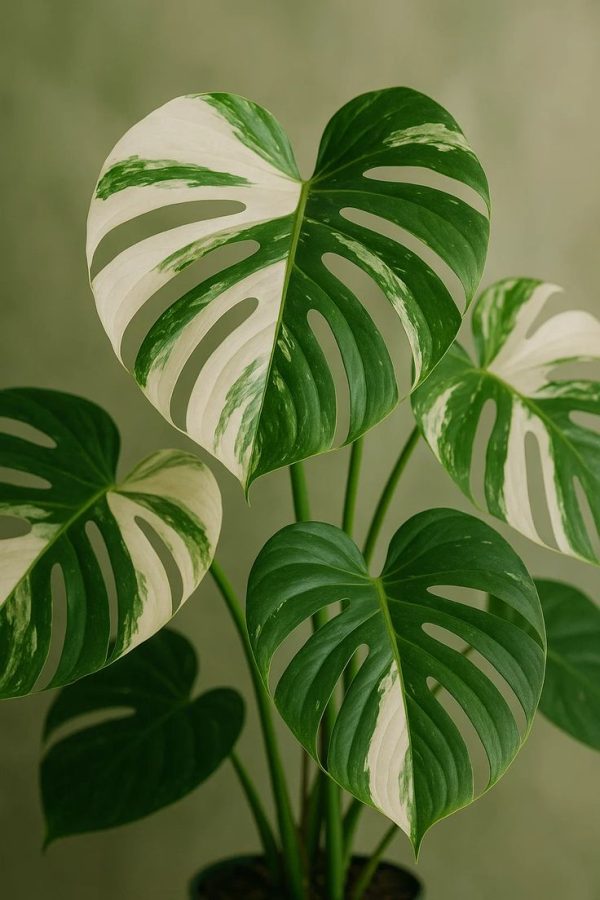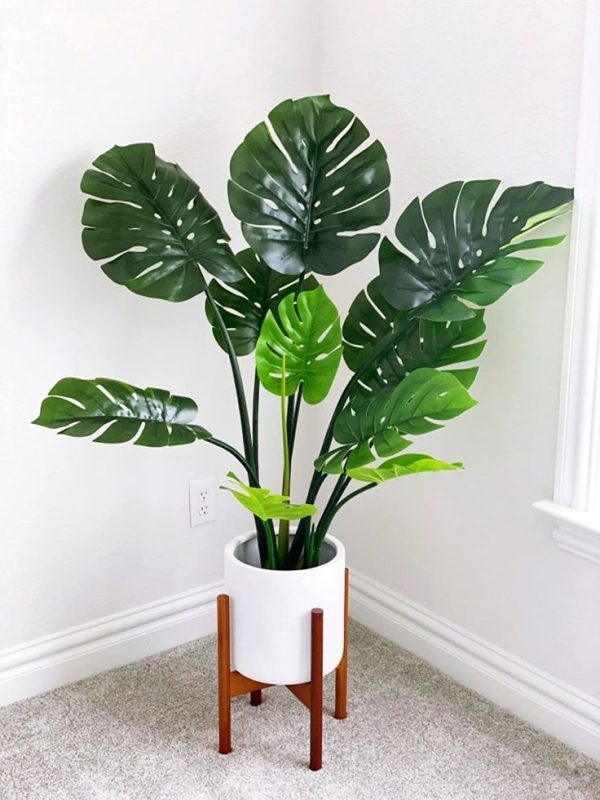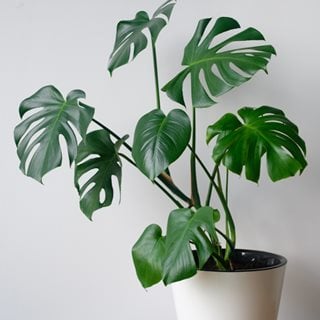Whatapp:
+278.3675.0634
Work Hours
Monday to Friday: 7AM - 7PM
Weekend: 10AM - 5PM




Original price was: $220.00.$150.00Current price is: $150.00.
MONSTERA PLANT is a genus of about 50 to 59 species of tropical flowering plants in the arum family (Araceae), native to tropical regions of Central and South America.
MONSTERA PLANT is a genus of about 50 to 59 species of tropical flowering plants in the arum family (Araceae), native to tropical regions of Central and South America, from southern Mexico to Panama. The genus name “Monstera” comes from the Latin word for “monstrous” or “abnormal,” referring to the characteristic large leaves with natural holes or fenestrations that many species develop
Varies, depending on variety. Many develop deep slits or holes, while some species remain solid. Coloring is green or with variegated patterns of green, silver, white, or cream.
Rarely blooms indoors.
Brown rope-like aerial roots develop along the stems. Lower roots can be tucked into the soil to nourish and strengthen the plant, while upper roots can be attached to climbing structures or allowed to grow freely. (MONSTERA PLANT)
Bushy or vining habit. When grown as a houseplant, plants can grow 3 to 20 feet tall and 1 to 3 feet wide.
Monstera contains calcium oxalate crystals, which are toxic to pets and humans. Plant sap can cause skin irritation or rashes in adults and children. (See more Common Poisonous Plants for Dogs and Cats.)
Plants that look similar to Monstera include mini monstera (Rhaphidophora tetrasperma) and pothos (Epipremnum spp.). Split-leaf philodendron (Philodendron bipinnatifidum) is sometimes confused with Monstera because of its close resemblance and mutual common name. (MONSTERA PLANT)
MONSTERA GROWING TIPS

Photo by: Sozina Kseniia / Shutterstock
Place near a window that gets bright indirect light/sunlight. Avoid direct sunlight, which can scorch the leaves. Plants can be set outdoors in an open shady spot during warmer months in summer. (MONSTERA PLANT)
Ideal temperature is between 65 to 85 degrees F. Temperatures below 55 to 60 degrees can cause plant stress or death. Keep plants away from heating vents and cold drafts.
Houseplants will do best with room humidity of at least 60%. Boost humidity by using a room humidifier, misting plants frequently, or setting pots on a shallow tray filled with pebbles and water. Make sure the bottom of the pot doesn’t sit in standing water to avoid root rot.
Monstera thrives in aerated soil that drains well, with a slightly acidic to neutral pH between 5.5 and 7.0. Use a soil especially formulated for growing Monstera, or use a high-quality potting mix, adding coco fiber and perlite or orchid bark to improve drainage.
Grow in a pot that is 2 to 4 inches wider and deeper than the root ball, with adequate drainage holes. Avoid planting in a container that’s too big to help prevent root rot. Make sure the pot is wide and deep enough to accommodate a moss pole or other support.(MONSTERA PLANT)
To encourage plants to climb, Monstera is often trained on a support known as a moss pole and provide the ideal surface for aerial roots to attach.
Water every 1 to 2 weeks, or whenever the soil feels dry 2 inches down. Allow plants to dry out in between waterings. Avoid overwatering, which can cause root rot. Reduce watering during fall and winter. (MONSTERA PLANT)
Apply a balanced 20-20-20 liquid fertilizer monthly during the growing season, from mid-March to November. Cease fertilizing in winter when plant growth slows down.
Plants can be kept bushy or allowed to climb. Trim back to desired size in spring when there is active growth. Save leaf cuttings to propagate into new plants. Remove any damaged or old leaves as needed to divert energy back into the plant.
Wipe leaves with a damp cloth every few months to keep foliage looking fresh.
Plants can be repotted every 1 to 3 years, or whenever they become rootbound. Repot in spring before new growth resumes. Choose a pot 2 to 4 inches larger than the previous container. Remove old potting soil from roots and refresh with new soil, covering the base roots and lower aerial roots.
The most common pests are aphids, scale, mealybugs, thrips, or fungus gnats. Remove pests from affected areas with a cotton swab dipped in 70% rubbing alcohol. For larger infestations, use insecticidal soap or Neem oil. Reapply treatment as needed. Isolate plants away from other plants until you’re sure the pests are eliminated. (See more on common houseplant pests.)
Monstera is most commonly propagated through cuttings or division. The best time of year to propagate is during spring and summer when plants are actively growing.
This is the most common and easiest form of propagation. Trim off a stem that has at least one healthy leaf and a node. Place cuttings in water until new roots develop, which can take up to several months. Change out water weekly to prevent bacteria from forming. Pot up rooted cuttings in fresh soil. Fresh cuttings can also be planted directly into soil. (MONSTERA PLANT)
Remove plant from pot and rinse soil from the roots. Separate sections by pulling them apart or clipping away from the main root system. Repot into fresh soil.
Reviews
There are no reviews yet.